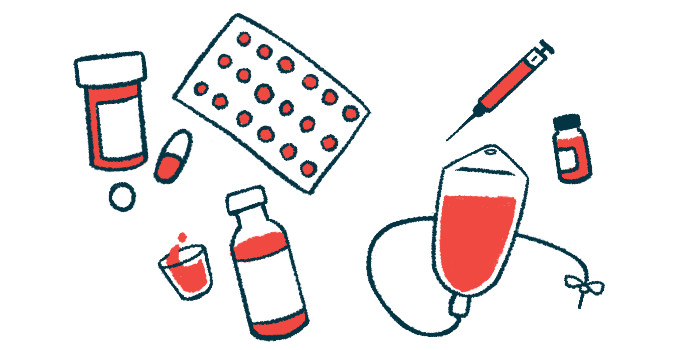Benefits seen in HAE with long-term preventive treatment in 6 countries
Lower rate of swelling attacks found in patients over 5.5 years in study
Written by |

The use of long-term preventive treatment among people with hereditary angioedema (HAE) was found to significantly reduce the rate of swelling attacks for patients in six countries, according to a new study conducted in North America, Europe, and Australia.
Considering the effectiveness of long-term prophylaxis in preventing HAE attacks, and “in agreement with current management guidelines, physicians should discuss the benefits of LTP [long-term prophylaxis] with all patients,” the researchers wrote.
The team noted that the type of preventive treatment used by patients “varied between countries, with tolerability and accessibility to specific treatments playing important roles in management decision-making.”
The study, “A multicenter chart review of patient characteristics, treatment, and outcomes in hereditary angioedema: unmet need for more effective long-term prophylaxis,” was published in the journal Allergy, Asthma & Clinical Immunology.
Investigating what, why treatments were given
HAE is a disorder characterized by sudden and recurrent swelling attacks affecting the deeper layers of the skin, specifically the mucosal linings of the respiratory and digestive tracts.
Its most common cause is a deficiency in C1-inhibitor (C1-INH), a protein that blocks the activity of other proteins involved in the production of the hormone bradykinin. That hormone plays a key role in the regulation of blood pressure, inflammation, and pain control.
When C1-INH levels are low or the protein malfunctions, bradykinin levels can get too high, causing fluid to leak from the bloodstream into nearby tissues and triggering an attack.
HAE treatment includes on-demand medications for attacks, short-term prophylaxis — preventive therapy given before anticipated attack triggers, such as surgery — and long-term prophylaxis to prevent recurrent attacks. Many options are available.
Now, to understand the reasons for recommending certain therapies over others, a team of researchers from academia and industry conducted a retrospective study at 12 clinical centers in six developed countries. The centers, which specialized in HAE care, were located in Australia, Canada, Germany, Italy, the U.K., and the U.S.
Data were collected between March 2018 and July 2019 from a total of 225 HAE patients who were followed for a mean of 5.5 years.
Altogether, 545 individual HAE attacks in 81 patients were registered. For the remaining 144 patients, only attack frequency was reported. Overall, 29.4% of attacks were severe or very severe, and 17.8% affected the larynx or voice box. The mean rate of HAE attacks, available for 131 patients, was 20.2 per year.
In 70 patients (51.1%) among the 137 with available information, one or more visits were made to healthcare resources related to HAE attacks: 38.7% visited the emergency room, 8.8% were hospitalized, and 23.4% had outpatient visits.
Data showed 421 attacks (77.2%) in 193 patients were treated with on-demand therapy. In most of these cases, that treatment was preferred over other types of treatment as it allowed patients more timely access to care. Other reasons leading clinicians to prescribe on-demand treatment included the frequency of swelling attacks and a history of larynx involvement
C1-INH concentrates, such as Berinert and Cinryze, were the most commonly used on-demand treatments, in 73.2% of attacks, followed by icatibant, used in 23.5% of attacks.
Nearly one-quarter of all patients — 54 or 24% — were prescribed short-term preventive treatment during follow-up, mainly Berinert (48.1%) and danazol (25.9%). These treatments were most commonly prescribed as a preventive measure in preparation for surgical or dental procedures.
More than half of all patients (53.8%) were prescribed long-term prophylaxis at least once, but in proportions that varied widely — from 87.5% in the U.K. to 7.1% in Italy. Among the 131 patients with reported data on HAE attack rates, 60.3% were given this type of treatment.
Preventive treatment given patients with more, worse HAE attacks
Statistical analyses also indicated that patients who were given long-term preventive therapies had a significantly lower rate of HAE attacks compared with those who were never prescribed this type of treatment.
The most common reasons leading doctors to prescribe long-term prophylaxis were the frequency of HAE attacks, their impact on patients’ lifestyle, need for hospitalization or ER visits, and a history of swelling attacks involving the larynx.
Androgens like danazol were the most commonly prescribed medications for long-term prophylaxis, used in 53.7% of cases. Such use was higher in the U.K. — among 85.7% of patients — and lowest in Germany, by 15.4% of the patients; in the U.S., it was used by 44.1% of patients.
Other treatments used for long-term prevention included Cinryze, Berinert, and tranexamic acid.
During follow-up, long-term prophylaxis was discontinued over 76 treatment periods, most commonly when patients received androgens (51.3%). This primarily was due to low tolerability or fear of potential side effects. Intravenous or to-the-vein C1-INH was discontinued in 34.3% of the patients, mainly due to its inconvenient route of administration. Tranexamic acid was discontinued in 13.2% of the patients, mainly due to lack of effectiveness.
Although older therapies such as androgens provide adequate protection for some patients, newly available [long-term prophylaxis] treatments have been demonstrated to improve outcomes further, potentially leading to better quality of life for patients and reduced attack-related [healthcare resources utilization].
“Overall, findings from this study support the use of [long-term prophylaxis] in the prevention of HAE attacks,” the researchers wrote.
“Although older therapies such as androgens provide adequate protection for some patients, newly available [long-term prophylaxis] treatments have been demonstrated to improve outcomes further, potentially leading to better quality of life for patients and reduced attack-related [healthcare resources utilization],” they wrote.







